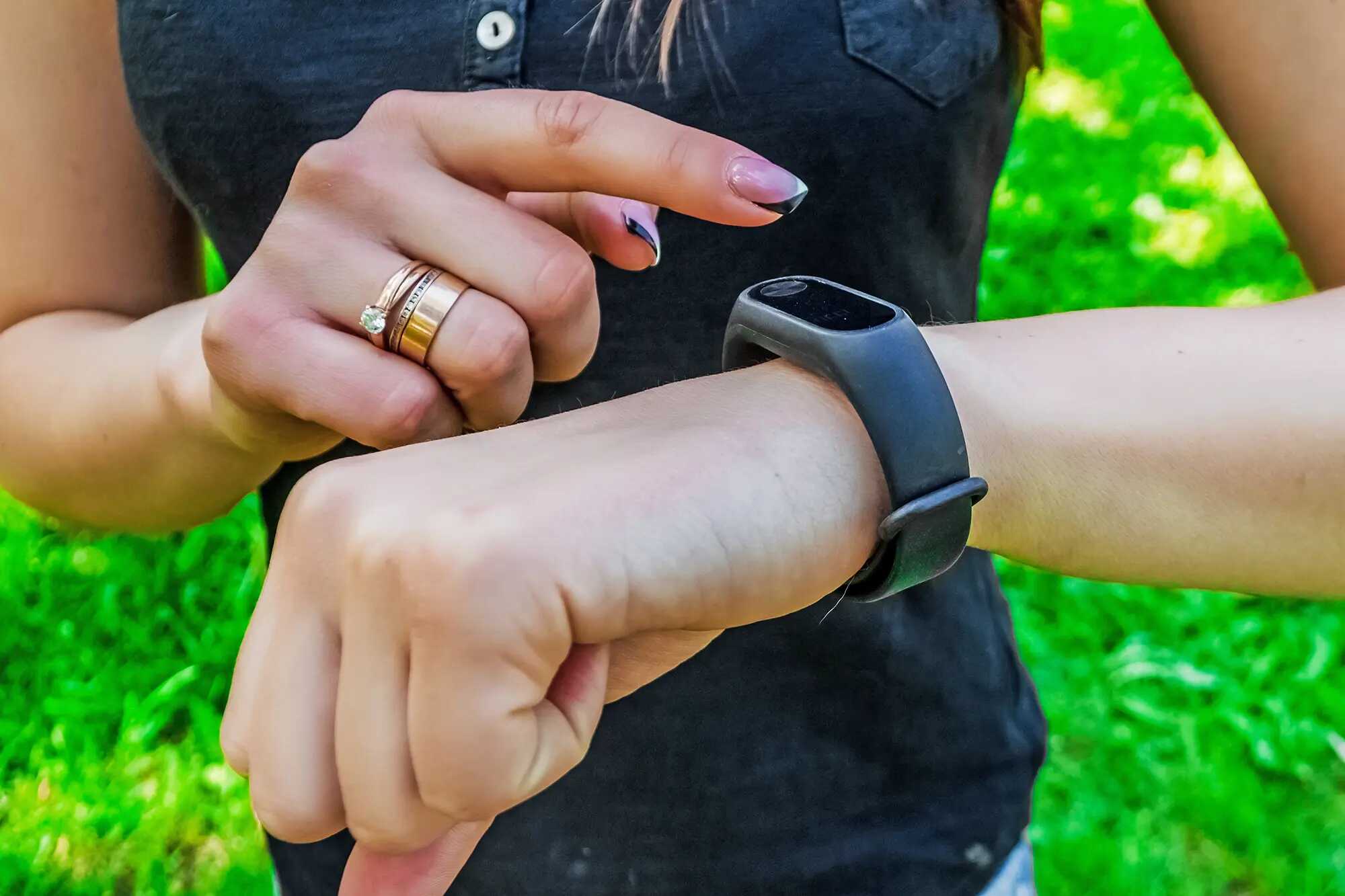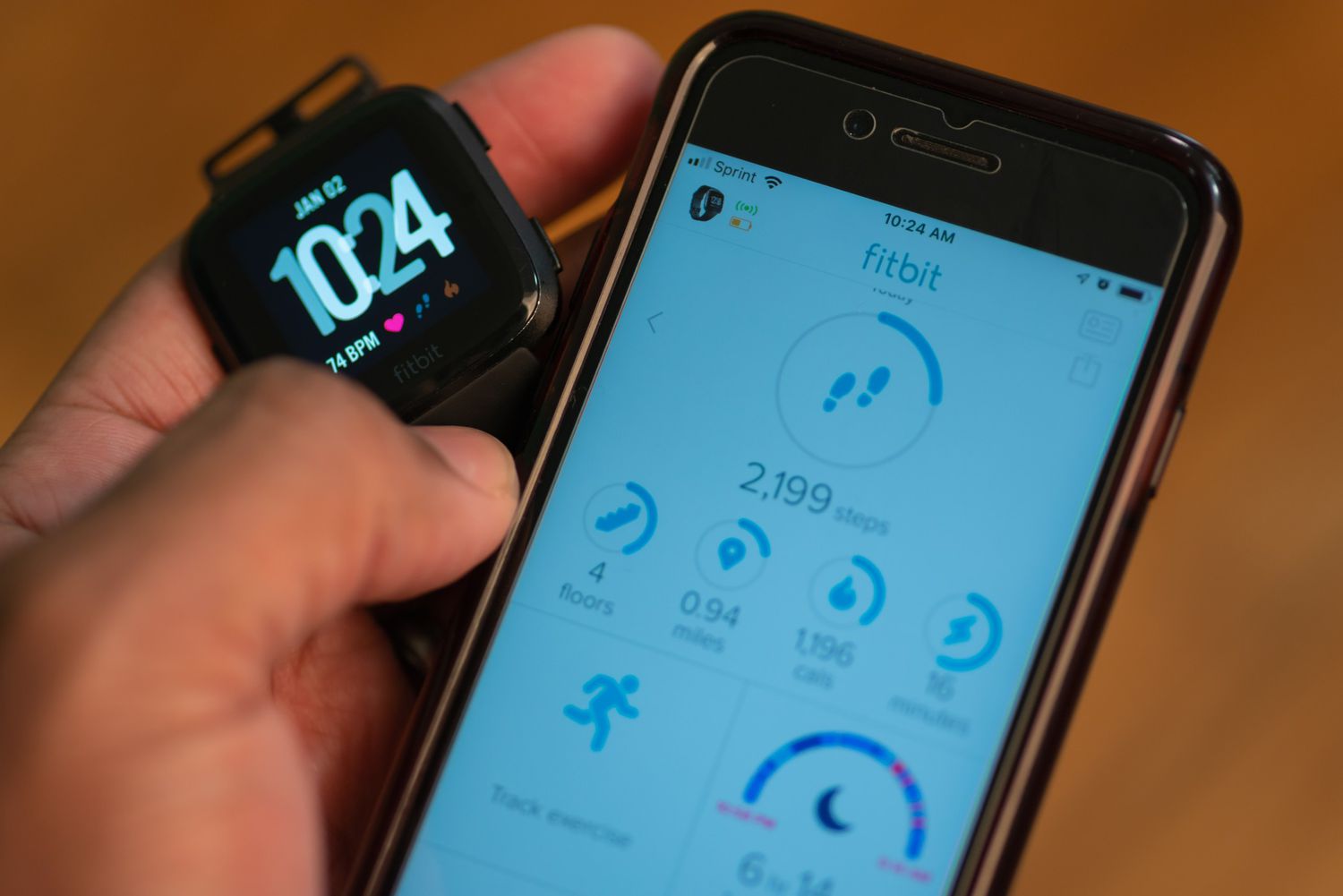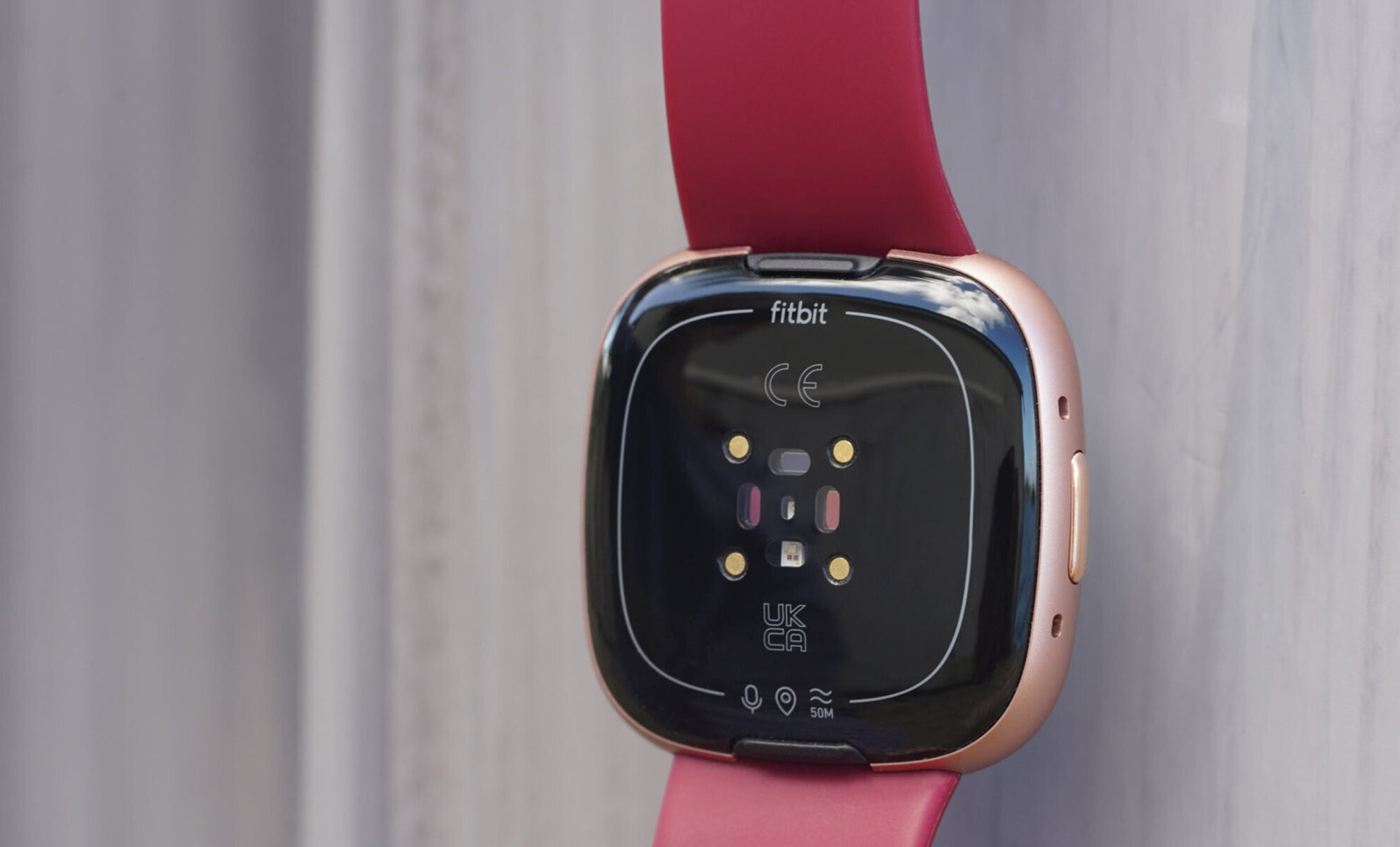Introduction
Setting and achieving step goals is a fundamental aspect of many wearable fitness devices, including Fitbit. These devices have revolutionized the way we approach personal fitness, providing us with real-time data and insights into our activity levels. One of the key features of Fitbit is the ability to set a daily step goal, which serves as a motivating target to encourage physical activity throughout the day.
In this article, we will delve into the process of adjusting your step goal on Fitbit. Whether you're a seasoned Fitbit user looking to challenge yourself further or a beginner aiming to start with a realistic target, understanding how to modify your step goal is essential. We'll explore the reasons why adjusting your step goal may be necessary, the step-by-step process for making these adjustments, and valuable tips for setting a new step goal that aligns with your fitness aspirations.
By the end of this article, you'll be equipped with the knowledge and confidence to tailor your Fitbit step goal to your current fitness level and future objectives. Let's embark on this journey to optimize your Fitbit experience and elevate your fitness endeavors.
Why Adjust Your Step Goal?
Setting an appropriate step goal on your Fitbit is crucial to maintaining motivation and achieving tangible fitness progress. However, there are several reasons why you might need to adjust your step goal over time:
-
Progression: As you consistently meet your current step goal, you may find that it no longer presents a significant challenge. Increasing your step goal can help you continue pushing your limits and experiencing ongoing improvements in your fitness levels. This progression is essential for preventing stagnation and ensuring that your physical activity remains effective in promoting overall well-being.
-
Injury Recovery: In the unfortunate event of an injury, your ability to meet your existing step goal may be compromised. Lowering your step goal during the recovery period allows you to maintain a realistic and attainable target that supports your healing process without causing undue strain.
-
Lifestyle Changes: Life is dynamic, and your daily routine may undergo shifts that impact your physical activity levels. Whether it's a new job, relocation, or changes in family responsibilities, these adjustments can warrant a reevaluation of your step goal to align with your current lifestyle and commitments.
-
Health Conditions: Certain health conditions or medical treatments may necessitate a modification of your step goal. For instance, individuals managing chronic pain or undergoing specific treatments may benefit from a reduced step goal that accommodates their physical limitations while still promoting movement and activity.
-
Initial Overestimation or Underestimation: When initially setting your step goal, there's a possibility of overestimating or underestimating your capabilities. Adjusting your step goal allows you to recalibrate and establish a target that is both challenging and achievable, tailored to your individual fitness level.
By recognizing the need to adjust your step goal on Fitbit, you demonstrate a proactive approach to your fitness journey. It's important to view these adjustments as opportunities to fine-tune your goals, ensuring they remain relevant and supportive of your overall well-being. With a clear understanding of why it's essential to modify your step goal, let's explore the practical steps to make these adjustments on your Fitbit device.
Remember, your step goal should be a reflection of your current capabilities and aspirations, serving as a source of motivation and a catalyst for sustained physical activity.
How to Change Your Step Goal on Fitbit
Changing your step goal on Fitbit is a straightforward process that empowers you to tailor your fitness targets to your evolving needs and aspirations. Follow these simple steps to modify your step goal and optimize your Fitbit experience:
-
Access the Fitbit App: Begin by opening the Fitbit app on your smartphone or tablet. Ensure that your Fitbit device is synced with the app to enable seamless communication and updates.
-
Navigate to the Dashboard: Once in the Fitbit app, navigate to the Dashboard, which serves as the central hub for monitoring your fitness metrics and setting goals. The Dashboard provides a comprehensive overview of your daily activity and progress.
-
Select the Step Goal: Within the Dashboard, locate and select the step goal feature. This may be represented by a prominent icon or labeled under the "Goals" section, depending on the app version and layout.
-
Adjust Your Step Goal: After selecting the step goal, you will be presented with the option to modify the target number of steps. Tap on the existing step goal to enter the editing mode, allowing you to input a new step count that aligns with your updated fitness objectives.
-
Confirm the Changes: Once you have entered the desired step goal, confirm the changes to save the new target. The Fitbit app will update your settings and synchronize the modified step goal with your Fitbit device, ensuring that it reflects accurately on your tracker.
-
Sync Your Fitbit Device: To ensure that the updated step goal is seamlessly integrated with your Fitbit device, initiate a sync between the app and your wearable tracker. This synchronization ensures that your device receives the latest settings and displays the adjusted step goal for your daily activity tracking.
By following these steps, you can effortlessly adjust your step goal on Fitbit, empowering you to stay aligned with your fitness ambitions and adapt to changes in your lifestyle or physical capabilities. It's important to regularly review and update your step goal to ensure that it remains relevant and motivating, driving you towards sustained physical activity and overall well-being.
With the ability to modify your step goal at your fingertips, you have the flexibility to fine-tune your fitness journey and embrace new challenges with confidence. Let's explore valuable tips for setting a new step goal that resonates with your individual fitness aspirations.
Tips for Setting a New Step Goal
Setting a new step goal on your Fitbit presents an opportunity to recalibrate your fitness journey and establish a target that resonates with your current capabilities and aspirations. Consider the following tips to ensure that your new step goal is both motivating and attainable:
-
Gradual Progression: When increasing your step goal, aim for gradual progression to avoid overwhelming yourself. Incremental adjustments allow your body to adapt to increased physical activity gradually, reducing the risk of overexertion and injury. This approach fosters sustainable progress and enables you to embrace higher step targets with confidence.
-
Realistic Challenges: While it's essential to challenge yourself, it's equally important to set a step goal that is realistic within the context of your daily routine and commitments. Consider factors such as your occupation, commute, and other regular activities when determining a new step goal. Striking a balance between ambition and realism ensures that your step goal remains achievable and motivating.
-
Account for Variability: Recognize that your daily activity levels may vary due to factors such as weekends, travel, or special events. When setting a new step goal, account for these fluctuations to establish an average daily target that accommodates both routine and exceptional circumstances. This adaptable approach fosters consistency and prevents discouragement on days with lower activity levels.
-
Listen to Your Body: Pay attention to your body's signals as you adjust your step goal. If you experience persistent fatigue or discomfort, reassess your new target to ensure that it aligns with your physical well-being. It's important to challenge yourself while respecting your body's limits, promoting a sustainable and enjoyable fitness journey.
-
Long-Term Sustainability: Consider the long-term sustainability of your new step goal. Aim to establish a target that you can envision maintaining over an extended period, fostering a consistent habit of physical activity. By prioritizing sustainability, you cultivate a positive relationship with fitness and ensure that your step goal remains an integral part of your lifestyle.
-
Celebrate Milestones: As you embrace a new step goal, celebrate the milestones along the way. Recognize and acknowledge your progress, whether it's achieving incremental increases or consistently meeting your revised step target. Celebrating these accomplishments reinforces your motivation and instills a sense of achievement, fueling your ongoing commitment to physical activity.
By incorporating these tips into the process of setting a new step goal on your Fitbit, you can cultivate a holistic approach to fitness that encompasses both ambition and mindfulness. Your step goal serves as a compass guiding you towards sustained physical activity and overall well-being, reflecting your dedication to a healthier lifestyle.
Remember, your step goal is a dynamic aspect of your fitness journey, and it's perfectly normal to adjust it in response to your evolving needs and aspirations. Embrace the opportunity to refine your step goal, empowering yourself to embark on a fulfilling and personalized path towards enhanced fitness and vitality.
Conclusion
In the realm of fitness and well-being, the ability to adapt and evolve is paramount. As we've explored the process of adjusting your step goal on Fitbit, it's evident that this customization is not merely a technical adjustment but a reflection of your commitment to holistic health. Whether you're increasing your step goal to embrace new challenges or recalibrating it to accommodate lifestyle changes, the act of modifying your step goal signifies a proactive and personalized approach to fitness.
By recognizing the dynamic nature of our lives and bodies, we empower ourselves to set goals that are not only motivating but also attainable. The journey towards optimal health is not a rigid, one-size-fits-all path; rather, it's a personalized expedition that encompasses our unique capabilities, aspirations, and circumstances.
As you embark on this journey with your Fitbit, remember that your step goal is a compass guiding you towards sustained physical activity and overall well-being. It's a tangible representation of your dedication to a healthier lifestyle, fostering a positive relationship with fitness that extends beyond numbers and targets.
The process of adjusting your step goal is an invitation to embrace change, celebrate progress, and prioritize your well-being. It's a testament to your commitment to self-improvement and a proactive stance in navigating the ebb and flow of life.
So, as you fine-tune your step goal, envision it as more than just a number on a screen. It's a reflection of your resilience, adaptability, and unwavering dedication to your health. Embrace the opportunity to refine your step goal, empowering yourself to embark on a fulfilling and personalized path towards enhanced fitness and vitality.
In the world of fitness, every step forward is a victory, and every personalized goal is a testament to your unwavering commitment to well-being. With the knowledge and flexibility to modify your step goal on Fitbit, you are equipped to navigate the ever-changing landscape of your fitness journey with confidence and determination.

























